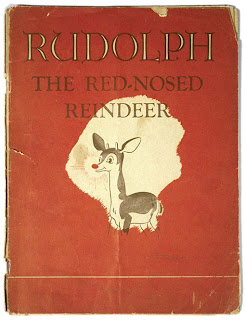Forgive me dear readers for not posting yesterday. I did not forget—Christmas shopping just takes a lot out of you. Since I neglected "Christmas Nightlight Readings" yesterday I will give you two today, starting with one of the most famous and adaptable Christmas stories from none other but Charles Dickens.
We have seen this story over and over again on film and stage, from "A Muppet Christmas Carol" (one of my favorites) to George C. Scott in "A Christmas Carol." I don't need to fill you in on the plot, because I don't know anyone who doesn't know the story. So as routine suggests, I will tell you the story behind the story.
As written in an earlier post,
O Tannenbaum, the Victorian era reintroduced the tradition of the Christmas tree (via Queen Victoria and her German husband Prince Albert) to the world as well as many other traditions. The Victorian era was fraught with the coal smoke of the Industrial Revolution and capitalism was sweeping Christmas traditions under the rug. During the 1840s, when Dickens wrote
A Christmas Carol, Englishmen were trying to reinvigorate traditions. In many ways Dickens own childhood inspired the characters and the plot, for he experienced a humiliating childhood and had great sympathy for the poor (he grew up poor). Immediately upon publication the book was a hit in Great Britain, but it received less enthusiasm in America (this was soon after Dickens' tourist journal of America was published and there were some hard feelings).
By the end of the Civil War, nearly every other household in America owned or had read
A Christmas Carol. The story helped Americans remember the spirit of kindness and generosity. This story has been such a great influence, several adaptations have been produced (with an influx of made-for-TV movies). There is even evidence in its inspiration in "It's a Wonderful Life," and "How the Grinch Stole Christmas."
December 18 & 25, 2011; January 1, 2012 at 9pm
January 8, 15, 22, 29; February 5, 12 & 19, 2012 at 9pm
January 15, 22 & 29, 2012 at 10pm
February 26, 2012 at 9pm (Check local listings)
April 1 & 8, 2012 at 9pm (Check local listings)
April 15, 2012 at 9pm (Check local listings)
April 22 & 29, 2012 at 9pm (Check local listings)











































